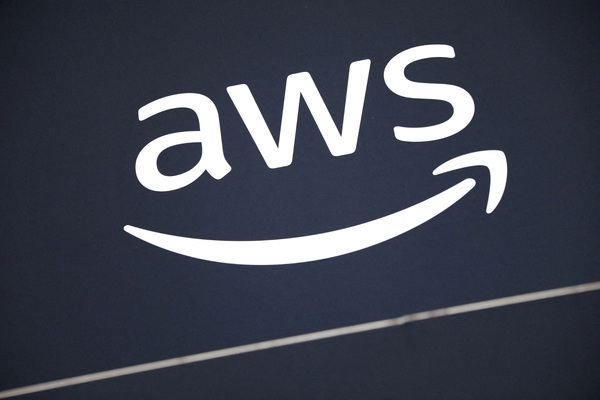How AI can help procurement better manage supply chain risk
Sponsored by Amazon BusinessArtificial intelligence is helping procurement professionals better assess supplier credentials, predict potentially disruptive events, and impose stricter spending controls

What role does artificial intelligence (AI) play in the supply chain?
According to Deloitte’s 2023 Global Chief Procurement Officer survey, AI-enabled supplier management is the biggest focus for procurement functions.
This involves using natural language processing (NLP) and AI to access and interpret information on suppliers, contract performance levels, risk and compliance and other metrics such as environmental, social and governance (ESG) credentials. Machine learning can then use this to identify trends and patterns, offering the potential to start predicting likely scenarios before they happen.
The survey suggests that between 80 and 85 per cent of companies are looking to enhance their supplier relationship management capabilities through AI.
How can AI help with supplier information?
According to the Deloitte survey, 75 per cent of leading procurement organisations already use some form of supplier risk scoring in sourcing processes.
AI can provide real-time information on the financial health of suppliers using openly available information from credit rating agencies and other sources of information. Social media feeds can also indicate that all is not well; a spike in comments or posts around late payments could indicate that a company is struggling.
AI could also measure wider supplier performance, using big data and NLP to trawl social media and the internet to track information produced about a particular organisation. This is likely to form part of due diligence procedures in the future, helping businesses make more informed choices. It could also see them make greater use of smaller organisations, by highlighting businesses with strong performance to buyers, who may otherwise not have known about them.
Amazon’s 2024 State of Procurement Data Report suggests a strong desire from procurement to use such capabilities more. Although fewer than half (47 per cent) currently deploy AI-driven optimisation of purchasing decisions, almost all (98 per cent) are planning investments in analytics and insights tools, automation, and AI-driven optimisation of purchasing decisions in the next few years.
How can AI help procurement better manage wider supply chain risk?
With more information available than ever before, AI combined with big data and machine learning can help predict events before they happen. “Machine learning-based analytics can look for patterns much faster,” says Rajiv Bhatnagar, director of product and technology at Amazon Business. “Once you have detected a pattern, you can take action.”
This could relate to weather patterns, identifying possible incidents that could disrupt vital trade routes weeks in advance. It could also be used to track commodity prices, highlighting where these are rising and are likely to filter through into higher prices for manufactured items further down the line. The Deloitte survey finds that 25 per cent of organisations are currently able to identify supply chain issues promptly “to a large extent”, and 63 per cent “to some extent”.
For procurement, this could mean it makes sense to bulk-buy items now or consider other strategies, such as entering a fixed-price contract or hedging. It could also indicate where prices may fall, in which case it would make sense to hold off entering contractual commitments.
Similarly, AI can identify patterns that suggest certain materials or commodities may be in short supply. Having this information earlier means organisations can plan for this, reducing their dependency on a particular component or ingredient, or sourcing alternative items as substitutes. This can help avoid a rush to move towards such products when the true situation becomes apparent, allowing procurement to avoid paying a premium.
Internally, AI can flag up unusual activity, such as large orders or requests to change invoice details or delivery addresses, which can help to flag and reduce exposure to fraud. Amazon Business already allows organisations to put parameters around purchases in place, mandating certain suppliers’ use or imposing spend limits.
How else can AI help procurement professionals?
AI can also help procurement in several other ways, including helping to identify what the organisation needs to buy and when. Using historical information and predictive analytics, AI can help ensure businesses have what they need when they need it and are not paying excessive prices.
Reducing unauthorised spend is another way in which data and analytics, underpinned by AI, can help procurement. By allowing staff to quickly identify products they need that meet the company’s criteria, using AI/ML through systems such as Amazon Business helps reduce the need and potential for such maverick spending. “It helps businesses align their decisions with company goals, react to changes with speed, and ensures a company has the right products at the right time,” says Bhatnagar.
AI can generate much more powerful management information, by extracting and interpreting data and trends from internal procurement or accounting systems. This means those working in procurement can provide finance teams or their board with greater insight into what is being spent and expected future costs, and can also help to visualise alternative scenarios should a particular course of action be taken. Those in procurement can use such information to ensure they’re still operating as efficiently as possible, consolidating suppliers and negotiating bulk discounts where needed.
AI can also be used to extract information from invoices and automate workflows for staff. This can lead to significant time savings, and free up staff to focus on other, more value-adding activities. In turn, this can make the function more attractive as a career and help reduce the pressure on existing teams. “Using analytics, employees feel more productive and know that they’re bringing more value to their job,” says Bhatnagar.
For more information on how Amazon Business can help your business reduce risk through the use of AI and ML, click here.

Business Reporter Team
Most Viewed
23-29 Hendon Lane, London, N3 1RT
23-29 Hendon Lane, London, N3 1RT
020 8349 4363
© 2024, Lyonsdown Limited. Business Reporter® is a registered trademark of Lyonsdown Ltd. VAT registration number: 830519543





